 Ever feel like your marketing isn’t going anywhere?
Ever feel like your marketing isn’t going anywhere?
You work hard on your website, spend a ton of time writing good emails, and do your best to create content that makes people come back to you over and over again.
And yet, nothing seems to stick. Your conversion rate is ok, but not great. Emails get opened, but the click-through rate isn’t stellar. Content gets read, but it isn’t generating much business.
All these issues are a symptom of a bigger problem: you don’t have a clear picture of who your target customer is.
And when you don’t know who you’re selling to, you can’t write engaging copy, you can’t filter out the bad apples, and you certainly can’t attract the customers you want.
In this article, we’ll teach you how to create a crystal clear buyer persona. In the end, we’ll give you a couple of templates you can use to create one quickly.
Ok Great… But What’s a Buyer Persona Again?
A buyer persona – or customer avatar if you’re one of the cool kids – is a fictional representation of a specific portion of your audience. In most cases, businesses can divide their customer base into 3 to 5 different types of people.
Here’s a real-world example:
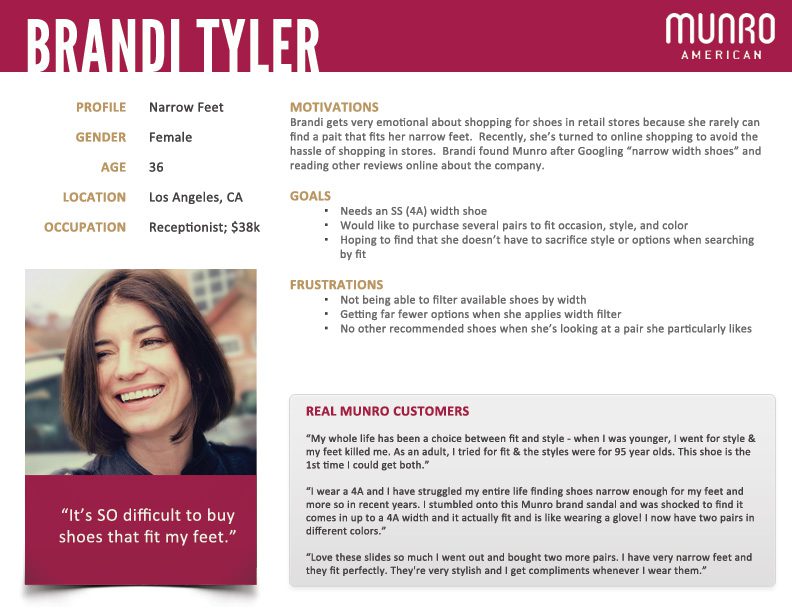
This avatar tells the company (Munro) that a part of their audience has trouble finding shoes that fit AND look great. It also gives them an idea of how old that segment is and what type of job they have. Info like this allows Munro to create awesome marketing campaigns that speak directly to that segment.
Do I Really Need One? Seems Like a Ton of Work…
Yup. And it IS a ton of work, but it’s worth it. Here’s why:
Let’s say you care a lot about sustainability and you’re looking to buy a car. If you walk into a dealership and the salesperson starts talking about how shiny the rims are or how cool it’s going to make you look, you’ll walk out because you don’t care.
But if they know a large part of their prospects are conscious about the environment, they can create a pitch that highlights how fuel efficient the car is, or how low a carbon footprint it has.
A buyer persona allows you to focus your marketing efforts on the people who need your help the most and who will buy your services and products. This focus helps you to:
- Write copy that connects with them on a deep level.
- Create ads and promotions that speak directly to your ideal customer
- Show the wrong type of people you’re not for them.
Now, if you’re new to creating personas, it can be quite daunting. How do you begin? What type of info do you need? How do you get that info?
Fortunately, it’s pretty straightforward. Yes, it requires you to get your hands dirty and do research, but it’ll be worth it.
Cool? Let’s get going.
Start By Figuring Out The Basics
The first step to creating your customer avatar is figuring out the basic demographics about your customers:
- Who are they?
- Where do they live?
- How old are they?
- What’s their gender?
- What’s their job?
Except for the job part, you can find all this information in Google Analytics. If you’re not using Google Analytics, we highly suggest you start today.
Go to your analytics panel, click on the audience tab and then click on the demographics tab to see where they live, if they use a mobile device to browse your site, and what age they are ( you might need to enable it first before it starts working).

All these tabs give you enough information to start painting a broad picture of who your customer is.
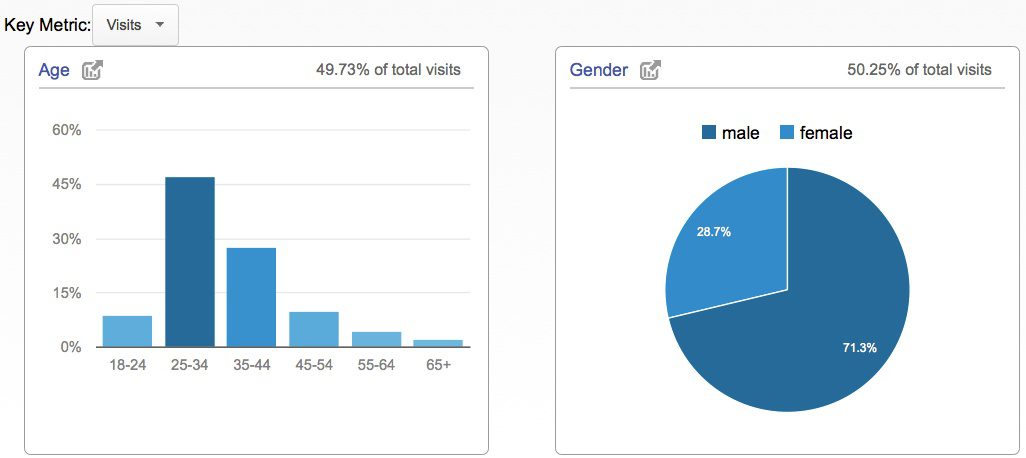
Don’t worry if your site is too small to get enough data. We’ll get to that in a minute.
Another way of finding out your demographics is to use Alexa. If you’re not familiar with it, it’s a site that keeps track of all the basic info about websites. Traffic, top keywords, top referrals, all the good stuff.
It also helps you learn more about who uses your site. Even the free version gives you enough data to get started.
To find out who’s using your site, go to Alexa, enter your website’s URL into the search bar, and press “Find:”
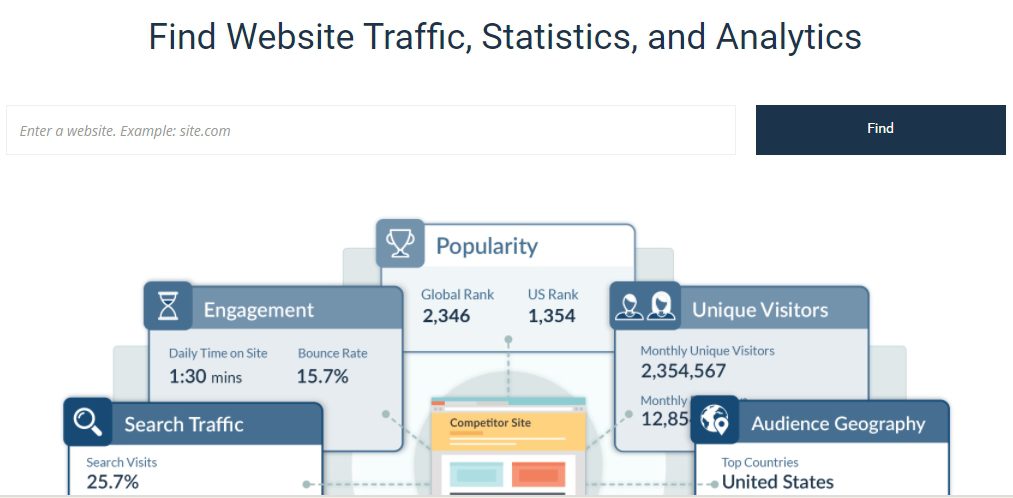
You’ll get a ton of info about your site. For now, though, we’re only interested in what education they have, what their gender is, and where they browse your website (this can help you figure out if it’s for personal or professional use).

If your site isn’t big enough to get meaningful data, you can enter your competitor’s URL to figure out who they’re targeting. Chances are you have similar audiences.
Add in Psychographics
Demographics are the “who.” Psychographics are the “why.” They tell you what your audience’s motivations are and what emotions they experience. They can turn a mediocre marketing campaign into something that creates a ton of buzz.
Specifically, they tell you what:
- Their goals are.
- Lifestyle they have.
- Their motivations are.
- Fears they have.
- Roadblocks they’ve come across.
Once you have a good grasp of what their motivations are and what they’re afraid of, you can write copy that connects with them on a deep level. Selling is going to become a lot easier and you’ll have more interaction with your clients/customers.
Take the ad below, for example.

Pretty standard airline ad, right? Professional look, bunch of landmarks in the back, a ton of white space to make it look expensive.
Now compare that to this tweet from Jetblue:
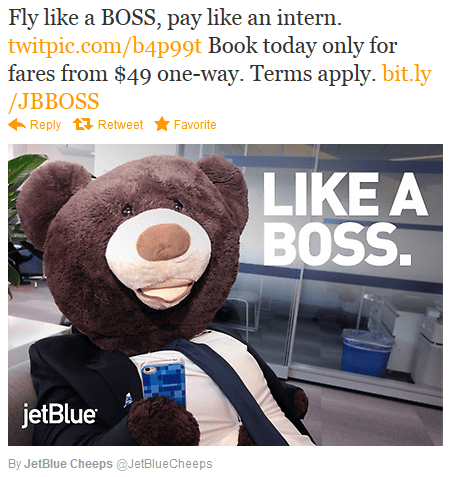
Jetblue is a low-cost airline that focuses mostly on young people who don’t want to be boring. They’ve spent a ton of time researching their customers and realized regular airline ads weren’t going to cut it. So they made theirs a little more whacky.
They’re not going to attract fortune 500 executives with this approach, but it certainly helped attract their core audience. In 2016, it helped grow their income by 7.9% compared to the previous year.
So, psychographics are great, but there’s one major problem: it requires quite a bit of digging to figure them out.
Demographics are pretty straightforward, you just look at the analytics. Psychographics, on the other hand, are a lot less tangible. You’ll need to gather a lot of data and look for patterns.
Here are a couple of ways you can get the info you need.
Method 1: Surveys
Surveys are great because you get to ask anything you want and you can scale it pretty easily. Just send your customers the link and you’re done.
Here’s an example from a survey done by Sarah Peterson from Unsettle:

By asking what they struggle with, you get an idea of what they really want out of your product. It could very well be that what you thought was crucial turns out to be trivial.
The difficulty with surveys is that you have to be able to ask the right questions. If you ask the wrong – or irrelevant questions – you won’t get many answers.
If you want to get the most useful data, ask about negative experiences that happened in the past. People tend to have an easier time recalling bad stuff, and they tend to be more clear about what they don’t want.
Method 2: Phone calls or in person
While surveys are great, nothing beats a good ‘ol fashioned phone call.
The biggest upside to a phone call is you get a feel for the emotion behind the answer. If they sigh or they get all worked up when talking about a problem, you know you’ve got something powerful that you can use later on.
Unlike surveys, phone calls are difficult to scale because you can’t automate it. You have to reach out to people, schedule calls.
Method 3: Email
Another good way of figuring out your customer’s motivations without annoying them is to use your welcome email as a survey tool.
They’ve just opted into your list, so now’s the best time to ask who they are and what they’re looking to get out of your product or service.

It takes a while to get going, but after a while, you’ll start to notice patterns.
Method 4: Digging in social groups related to your topic
When doing customer research, digging in social groups is often ignored because it doesn’t scale well and you’re not guaranteed to find anything useful. That said, you can use social groups to learn a lot about your audience.
Take a look:
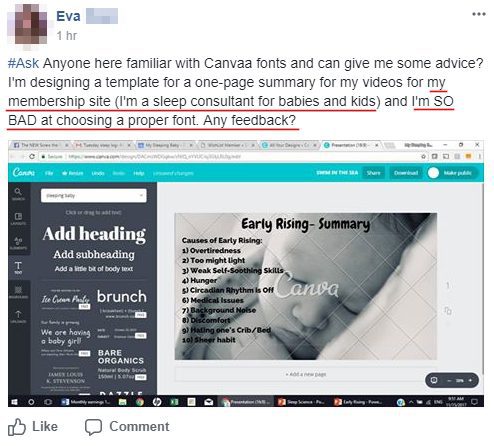
The example above tells you that she:
- Has a membership site
- Is a sleep consultant for babies and kids
- Is SO BAD at choosing a proper font
If you find out that a lot of your ideal customers are bad at design, that’s something you can incorporate into your marketing.
Using Personas Effectively
Creating avatars is great, but unless you use them properly, you won’t get much out of them.
There are a couple of areas where using a persona really helps.
Headlines
Your headline is the most important element on the page. Whether it’s on landing pages, sales pages, about pages, or even just home pages. It’s the first thing people see and it determines if people stay or click away.
Use the headline to highlight the customer’s biggest pain, or use it to give them the biggest benefit. Whichever one you pick, make sure your customer thinks it’s really important.
Intros
Once your headline has done its job, it’s time for your intro to step up to the plate. You’ve managed to get their attention and now you’ve got to convince them your copy is worth reading.
The way you do this is by showing them you know what they’re going through. Highlight a pain, tell a story, or give them an example they can relate to. Once you’ve got them hooked, they’re more likely to read the rest of your copy.
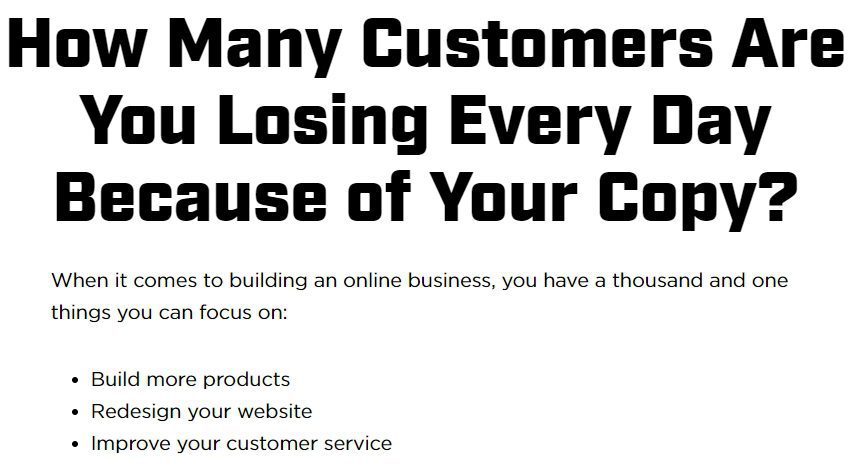
The example above shows you how it’s done. The headline highlights a pain, and the intro calls out a roadblock a lot of beginning entrepreneurs have (not knowing what to focus on).
Benefits
The benefits – or bullet points – are where you show your ideal customer what you can do for them and what they’re going to get out of your product or service.
Here’s where you show them how your product or service is going to alleviate their pain and remove any roadblocks that keep them from reaching their goal.
Templates You Can Use
Now, designing your own buyer personas from scratch is great, but you might not have the time to create an avatar yourself. To make sure you still create one, here are a couple of ways you can create personas fast.
Make my persona
Hubspot’s make my persona is a step-by-step wizard that helps you create avatars. They have a predetermined set of questions for you to answer, so you’ll get a good persona out of it.
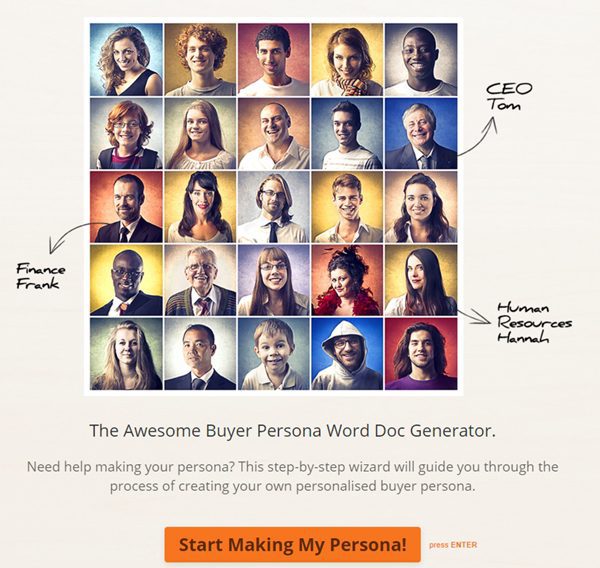
User Persona Generator
An alternative to Hubspot is this user persona generator from Xtensio. You need to make an account before you can use it. But if you don’t mind signing up, it’s pretty good.

Conclusion
Taking the time to research and understand your customer can seem like a lot of work.
And to be fair, it is. It takes time, it takes work, and it might cost you money. But when it comes to understanding your customer, you can’t afford to be cheap.
Once you have a good sense of who is buying from you and what their motivations are, you’ll be able to create much more powerful marketing materials.
What’s your favorite way of learning more about your customers? Let me know in the comments below.
Robin Geuens is a freelance content marketer who helps businesses write content that gets more traffic, subscribers, and leads. You can find him at Atompilot.com.

